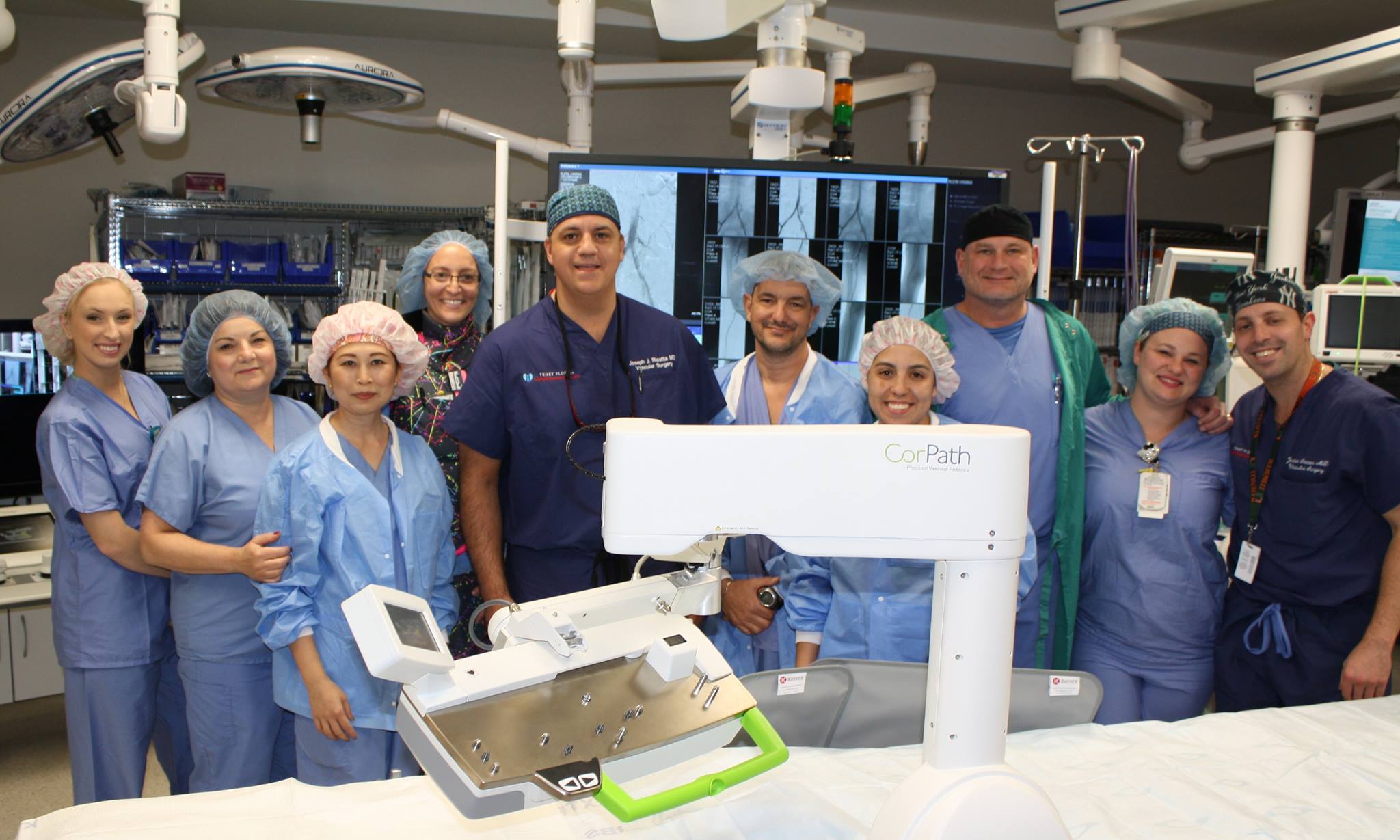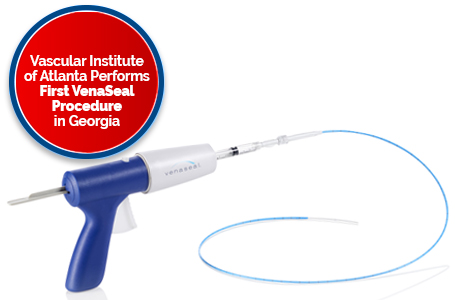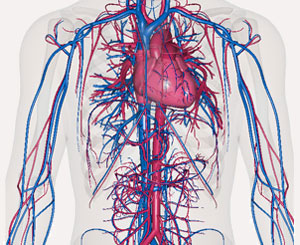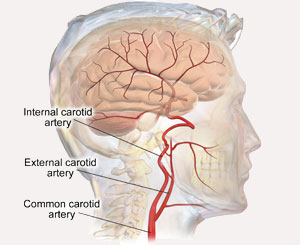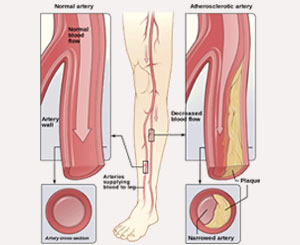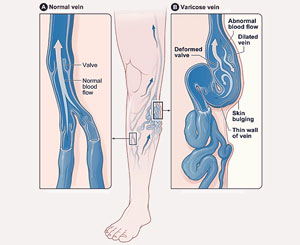When it comes to several of the common conditions treated by a vascular surgeon, most people are familiar with things such as varicose veins and aneurysms. However, as with any medical profession, we treat an assortment of lesser-known ailments that still warrant attention.
Thoracic outlet syndrome (TOS) is a grouping of disorders that occurs when the nerves and/or blood vessels in the lower neck and upper chest area are compressed or injured, or simply become irritated over time.
CAUSE
The thoracic outlet is a space in your lower neck and upper chest, between the clavicle (collar bone) and first rib, where the grouping of blood vessels and nerves that travel through it may become abnormally compressed. This can cause pain in your shoulders and neck and numbness in your fingers. Common causes include physical trauma such as an old collarbone fracture or scar tissue from a prior shoulder injury, repetitive movements in the arms and shoulder, and certain anatomical defects, such as having an extra rib.
People who perform activities with repetitive movements of the arms and shoulders such as athletes, hairdressers, construction workers, painters, and manual laborers are more likely to develop this condition because the repetitive motion causes extra pressure on the nerves and blood vessels. Other factors include long-term posture issues, whiplash injuries, weightlifting, and continuous stress or depression.
For the most part, TOS affects people of all ages and gender; however, it tends to be more common in women, especially in those with poor posture and/or limited muscle development, and usually affects the side of the dominant hand.
SYMPTOMS
While sometimes confused with angina, which involves chest pain due to a diminished supply of oxygen to the heart, individuals with TOS generally complain of neck, shoulder, and arm pain, with numbness and tingling of the arm, hand, or fingers, or signs of poor circulation such as bluish discoloration of the arm and hand, cold hands, or a swollen arm. Although the pain of angina generally increases when walking, chest pain as a result of TOS will show no change when the individual moves around. However, unlike sufferers of angina, they may experience increased pain when raising the affected arm above their head.TYPES OF THORACTIC OUTLET SYNDROME
Venous Thoracic Outlet Syndrome: Generally caused by damage to the major veins in the lower neck and upper chest, this condition has a rapid onset that includes swelling of the arms, hands, and fingers, and may cause feelings of heaviness or weakness in the neck and arms. The veins in the chest may also become noticeable due to swelling and a blood clot can form in the vein at the sit of compression.
Arterial Thoracic Outlet Syndrome: Generally caused by bony abnormalities present in the lower neck and upper chest at birth, this form of TOS is relatively rare, yet the most serious. Symptoms include numbness and tingling, cold sensitivity in the hands and fingers, poor blood circulation to the arms, hands, and fingers, and pain or sores on the fingers.
Neurogenic Thoracic Outlet Syndrome: This form of TOS is generally the most common and is often related to abnormalities of the tissues in the lower neck region which compress or irritate the brachial plexus, the complex bundle of nerves that supply movement and feeling to the arm and hand. Symptoms include pain, tingling, prickling, and heaviness or weakness of the neck, chest, and arms. A decrease in the size of the hand muscles on one side of the body may also be seen as well.
TREATMENT
As with anything, early attention increases the odds that treatment will be successful. However, the type of treatment varies depending upon the type of TOS and its severity, but general treatment goals involve the reduction of symptoms and pain. In many cases, conservative treatment, such as physical therapy with range of motion stretching exercises and medication is effective, especially when the condition is diagnosed early. However, if symptoms continue to worsen and you experience incapacitating pain or signs of blood vessel blockage or significant nerve damage, surgery is recommended. The most common surgical procedure for thoracic outlet syndrome treatment involves partial resection of the first rib through a small incision under the collarbone or in the armpit, which creates more space between the rib and collarbone and releases the pressure on the vessels and nerves.
If you are worried that you may be suffering from TOS or know someone who is, it’s important to be evaluated by an experienced healthcare provider. If you’d like to learn more or would like to schedule an appointment with our office, please contact us at 470-355-3053.
Dr. Joseph J. Ricotta II MD, MS, FACS
Vascular Institute of Atlanta
www.AtlVascular.com
470-355-3053

